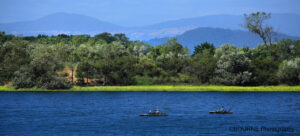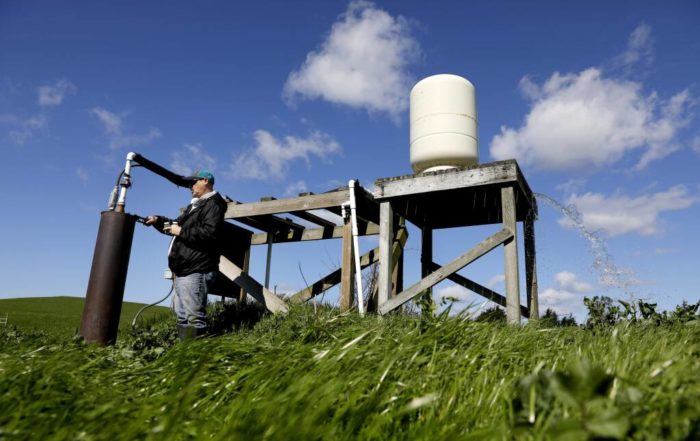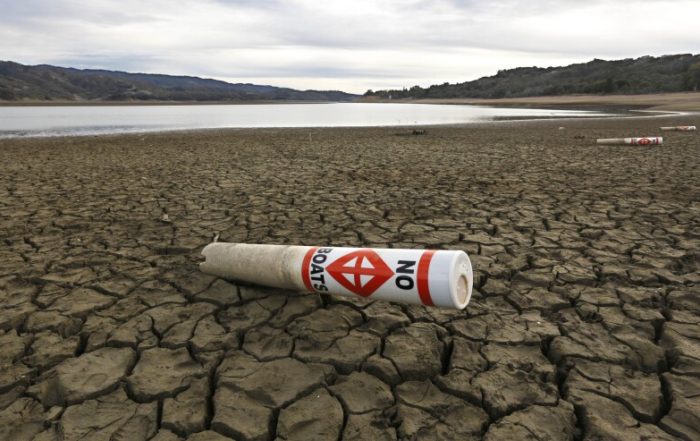
The Water in Our River
The well-known phrase “Go with the flow” takes on a different and more vital meaning when it comes to the Russian River. Because here in the Russian River Watershed, our people and economy are heavily reliant on continuous flows in the Russian River. It is this irreplaceable natural resource that makes everything “go” in our community.
Although we often take this water for granted, its presence is the result of a complex and historic water management system.
Here’s how the river’s flow is currently maintained. In the summer, water from Lake Mendocino flows into the river at Ukiah. Then water from Lake Sonoma joins the river at Dry Creek, near Healdsburg, and flows on to the coast at Jenner. Lake Mendocino holds an average of one to two years of water supply, so the upper Russian River is acutely vulnerable to droughts or excessive water use reducing flows.
Making this system even more complex is that much of the water in Lake Mendocino comes from the Eel River. Two dams on the Eel River store water, which is then diverted to the Russian River through a mile-long tunnel.
Major Changes in Eel River Diversion
In January of 2019, PG&E who owns and operates the Potter Valley Project that diverts water from the Eel River to the Russian River, announced they would surrender their Federal hydroelectric power license. The Project was put up for auction with no takers, a consortium of counties, local tribes and fishery groups attempted to take over the license but couldn’t obtain enough funding to do so.
This moved the Project into a decommissioning phase and PG&E announced in November 2023 that they would remove the two dams on the Eel River. A joint powers authority has been organized with Sonoma, Mendocino, Humboldt counties, Eel River tribes and fishery groups to work towards continuing a diversion in a more fish friendly manner. If a diversion does continue it will be a wintertime diversion that only operates when there are high flows, which generally means a wet winter when Lake Mendocino on the Russian River side is already at capacity.
To make use of this winter water delivery we must find ways to store this water until water use spikes in the dry summer months. From groundwater recharge to on farm ponds to household water storage there are many ways we can capture the excess water in winter and save it for summer. If we do it right, we can reduce summer drawdown of Lake Mendocino and save water for future years to protect our community and the river from impacts of drought.
But there will be no quick fix. Changing a long established water management system—affecting a wide range of stakeholders— and building more water storage will take years.
Conservation is Key
Solving the river’s flow problems can’t wait. While most people are fixated on working to preserve some diversion from the Eel River, we must develop other solutions like capturing more water during periods of high flows.
Russian Riverkeeper is taking a leadership position in working to ease some of the flow reductions, but the only way for our community to sustain itself through this time is to both reduce urban and agricultural water demands and work to increase water storage and supply.
If we care about the river, we must conserve and work towards collaborative solutions to capture and store more water when we have it.
Russian Riverkeeper is working at the legislative level to develop policies that require additional water conservation measures in times of drought so that we can be assured of year-round water in the river.
Visit our Advocacy Webpage to learn more about specific steps we can take.
Recent News
Voluntary Water Sharing Agreements
To date, our watershed has largely been plagued by colossal sized gaps in the available data our water managers have access to when trying to make informed decisions for our waterways. Finding ways to close [...]
First-ever Well Water Fees Proposed
The Santa Rosa Plain Groundwater Sustainability Agency is currently looking at a variety of fee structures that would allow them to better achieve the goals of the Sustainable Groundwater Management Act. Considered to be a historic [...]



